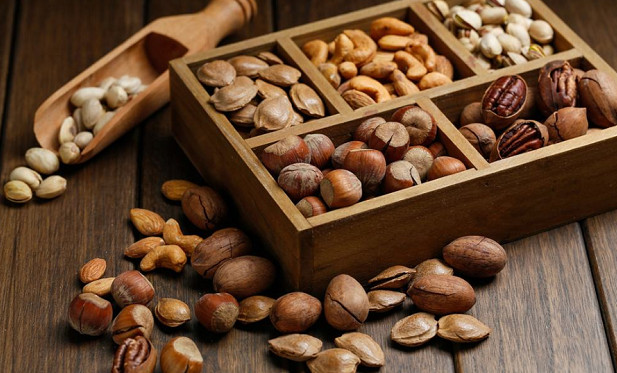Development Status of Shelling Technology for Nut Materials (3)

(3) Pine seed sheller: The most representative of pine seed shelling is the SZ-1 type pine seed sheller developed by the Northeast Heavy Machinery Institute. The machine has the characteristics of high pine nut integrity rate (up to 99.3%), high productivity, small size, light weight, low energy consumption and good sanitary conditions. It uses a pair of rolling rollers that move in opposite directions to break the hard shell of the pine nuts. The rolling roller consists of several rolling wheels.
The surface of the wheel is machined into an annular circular groove, and a plurality of small triangular small grooves are added to the surface of each groove. The arc table grooves of the two corresponding wheels constitute an elliptical hole type, and the long axis thereof is parallel to the axis of the rolling wheel. A pine seed guide positioning device is mounted on the upper portion of the two relatively slewing rollers.
The pine nuts continue to rotate while sliding. When the rolling roller continues to rotate relative to each other, the two sides of the pine seed are instantaneously squeezed and exploded, and the skin is broken and the kernel is intact, and the shelling process is completed. The machine can also shell the hazelnut and apricot kernels, and the integrity of the nuts is over 98%.
(4) Chestnut shelling machine: The chestnut shelling machine has two types of rollers - concave plate and cutter plate. Roller - The most critical part of the concave plate sheller is the scratch. The machine is equipped with a set of serrated disc cutters of equal spacing (about the size of the chestnut) on the raw material feed roller. When the feeding roller rotates, the chestnut is brought into the work area, and after the crack is applied to the outer casing, it is sent to the peeling area.
When flaking, the serrated strips exert a radial and tangential force on the chestnut. The horizontal strip on the concave plate is a movable cylindrical strip which can rotate with the rotation of the chestnut. The rotation of the horizontal strip can protect the chestnut and avoid the tough mechanical flaw. In the cutter-type sheller, the cutter head realizes the planing function, and the guide groove serves as a guide, which together complete the shelling process.
At present, on the basis of traditional shelling equipment, although China is actively developing and developing various types of shelling machinery, its development is quite slow. At the same time, mature models and mass production are not much, far behind the deep processing of agricultural products. Demand.
There are also technical problems as follows:
a) The rate of shelling is low, the rate of breakage of kernels after shelling is high, and the loss is large;
b) The performance of the machine is unstable and the adaptability is poor;
c) Poor versatility: Most shellers only adapt to the shelling operation of a certain kind of grain, and can not adapt to the shelling of other grains by replacing the main working parts, the utilization rate is low; the operating cost is high: China's shelling machinery has not yet The scale and series are formed, most of which are manufactured in a single machine, and the manufacturing process is low, so the manufacturing cost is high.
d) Some products have only been prototyped or tested in small quantities. There are no large-scale production assessments and demonstration applications. There are still many problems in terms of performance, reliability, durability and commerciality.
in conclusion
In the research on the processing methods of nut agricultural materials, in addition to finding new breakthroughs in principle, scientific and technical personnel should try to use a variety of shelling methods to find the best combination and combine new methods to improve The shelling rate and the whole kernel rate of the shelled nuts are required to meet the demand for deep processing of agricultural products.